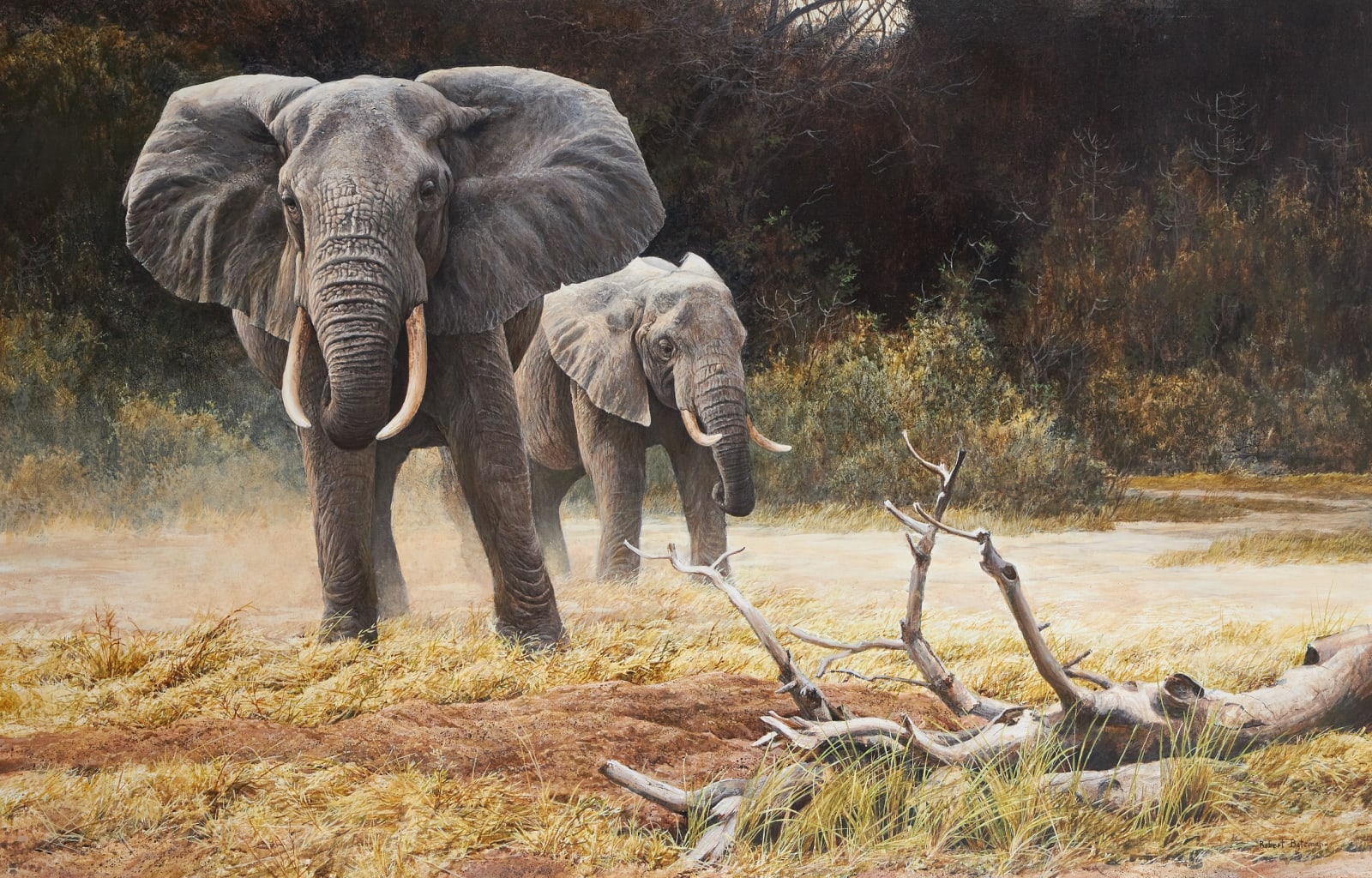Robert Bateman Canadian, b. 1930
Further images
Beginning his career as a teacher, Canadian Robert Bateman’s passion for painting and nature led him to travel extensively and he became a full-time artist in 1976. Today his realist wildlife paintings are world-renowned and found in important collections of animal art globally, including the National Museum of Wildlife Art in Jackson Hole, Wyoming. His dedication to conservation inspired him to create the Bateman Foundation in 2012, a charity helping connect people with nature through art. His art has helped raise millions of dollars for environmental causes.
Painted in 1971, this work was inspired by witnessing a similar scene on a safari trip to Lake Manyara in Tanzania. Bateman said of the painting:
In this painting, I wanted to show an unremarkable mother elephant facing a potential threat with her trusting calf at her side. In the foreground is a trampled termite mound. The viewer might notice that the grass near the fallen tree is not trampled; no animals would walk or feed in that area because the tree is in the way.
This description upholds his own labelling as an ecological painter and interest in capturing an animal’s true habitat. In this way the dead tree in the foreground is as significant as the elephants. His attention to details such as this and the disturbed ground and dust created by the elephants demonstrate his commitment to realism and deep understanding of the subject. The frame of the painting has been purposely chosen to draw attention to the tree in the foreground.

